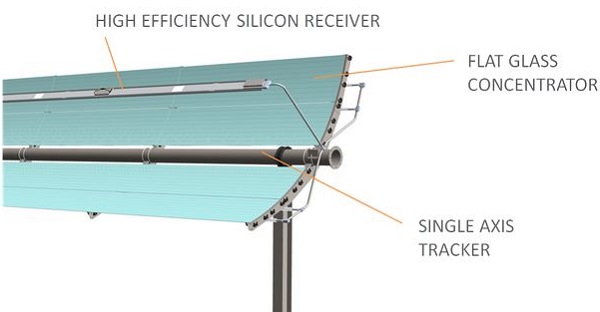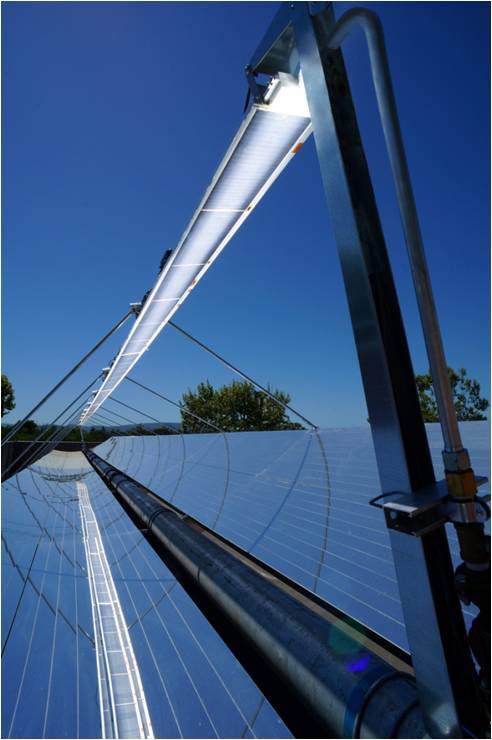Fifty cents a watt? Wow. That’s the module cost claim for utility-scale installations that Cogenra is making with its new T14 PV system.
The emphasis on the system’s ability to deliver low-cost benefits with low-concentration photovoltaics is a bit of a shift for Cogenra, which had long sold itself as uniquely able to combine PV and solar thermal technologies to produce electricity and heat (thus the company name, Cogenra, for cogeneration).

Cogenra said the T14, a ground-mounted system for large distributed and utility-scale generation, offers “the lowest system cost in the PV industry.”
“The rugged, reliable, low-cost optics and the high efficiency, Made-in-USA T14 receiver enable the module to achieve fifty cents per watt, providing a levelized cost of electricity (LCOE) that is up to 20 percent lower than conventional photovoltaic (PV) systems,” the company said.
For comparison, as Greentech’s Herman K. Trabish noted, the recent GTM Research PV pricing trends report forecast that “looking into 2015 and beyond, module pricing will resume its long downward trajectory, eventually hitting $0.50 per watt for Tier 1 Chinese modules in the base forecast.”

Low concentration PV, or LCPV, uses fewer monocrystalline silicon solar cells than a standard solar module, thus saving on cost, and ratchets up their power-producing capacity with reflectors that multiply the sun’s concentration by anywhere from twice to maybe 100 times through the use of things like specially treated glass, reflector films or parabolic mirrors. It’s distinct from high-concentration PV systems, which concentrate the sun’s irradiation by much larger factors – 500 or 1,000 times.
A key factor in these systems is to dissipate the high levels of heat generated under concentration, and there Cogenra said it’s using the same system it used in the more than 35 installations it’s done over the years. What’s new and better with the T14, the company says, is the low-cost optics, which concentrate to a factor of 14 times (meaning that a 30 megawatt power plant would require just 2.1 MW of PV cells).
As for cogeneration, it seems to be almost an afterthought with this new Cogenra product. “The T14 system also includes integrated waste heat recovery for optional cogeneration,” the company says on its website.
Cogenra said an apparently smaller T14 system is now being installed in California, while the first “megawatt scale PV project” will break ground in Tucson, Ariz., in January. That would be the project announced jointly this week by builder/owner/operator Washington Gas & Electric Systems and Tucson Electric Power for a system at the Solar Zone within the University of Arizona’s Science & Technology Park. The companies said the system was expected to produce 1,986 megawatt-hours of solar energy per year (a capacity factor of 22.7 percent, by our calculation), which TEP will buy under a 20-year power purchase agreement.